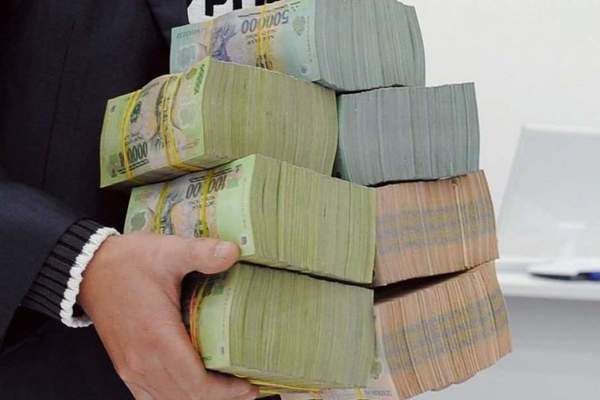In a report reviewing the 2016-2020 period, the Ministry of Finance (MOF) said the state budget collection scale has improved, about 24.5 percent of GDP, higher than the target of 23.5 percent of GDP set by the National Assembly.

The revenue from domestic sources has been increasing, now making up 81.6 percent of total state budget collections. The figures were 59.5 percent and 68.7 percent in 2006-2010 and 2011-2015, respectively.
The increased proportion of the collections from domestic sources has helped offset the decrease in the revenue from crude oil and import/export taxes.
This led to less reliance on outside factors and revenue from natural resources. The proportion of revenue from crude oil and import/export taxes decreased from 30 percent to 17.8 percent in 2016-2020.
The state budget over-expenditures decreased rapidly in 2016-2019, at 3.5 percent of GDP on average. The figure of 3.4 percent was projected for 2020, but the real figure is estimated at 4.99-5.99 percent of GDP because of Covid-19.
If so, the over-expenditures in 2016-2020 is estimated at 3.8-3.9 percent of GDP.
Because of the over-expenditure in 2020, the public debts are estimated at 56.8-57.4 percent of GDP, while the government’s debts are 50.8-51.4 percent of GDP.
These are still within the safety line set by the National Assembly (public debts must not be higher than 65 percent of GDP, while government’s debts must not be higher than 54 percent).
Regarding the targets for 2021-2025, MOF said there will be a difference in the period as the adjusted figure about GDP will be applied. As the GDP after the revision is higher, the targets will be re-calculated.
In general, since the adjusted GDP is higher, the indexes based on GDP will be ‘better’ than in 2016-2020.
The mobilization rate for the state budget is estimated at 15-16 percent of GDP, or 19-20 percent of the GDP before adjustment, including 13-14 from taxes and fees, or 16-17 percent of GDP before revision.
The spending on investment and development is 27-28 percent of total state budget’s expenditure. Of this, regular expenses, including spending on wage reform, would be 62-63 percent of total state budget’s expenditures.
The ratio of over-expenditures to GDP in 2021 is estimated at 4 percent of GDP, while it would decrease gradually to 3.4 percent by 2025. The figure would be 3.7 percent of GDP in 2021-2025.
The public debts won’t exceed 55 percent of revised GDP by 2025 and the government’s debts won’t exceed 50 percent.
The General Statistics Offic (GSO) reported that Vietnam’s GDP after the revision, in accordance with the current price, increased by 25.45 percent per annum in 2010-2017.
Luong Bang

Public debt: one fourth of state budget collections used to pay debt
The public debt to GDP ratio has been controlled well and has decreased in recent years. But the public debt repayment to budget revenue ratio has steadily increased because of many due debts.

Public debt estimated to reach 56.8% GDP by year end
The government’s report on public debt in 2020 and estimates in 2021 show remarkable figures about the national debt.